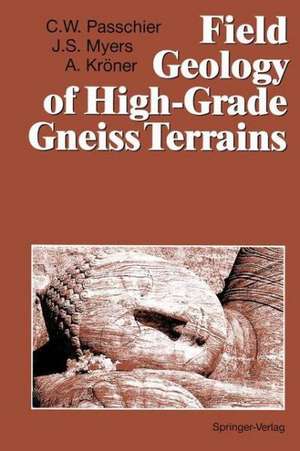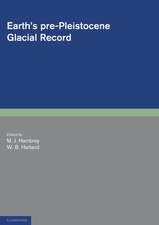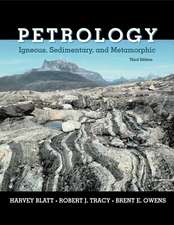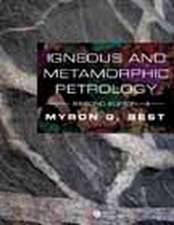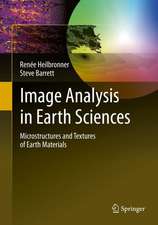Field Geology of High-Grade Gneiss Terrains
Autor Cees W. Passchier, John S. Myers, Alfred Kröneren Limba Engleză Paperback – 30 noi 1990
Preț: 380.14 lei
Nou
Puncte Express: 570
Preț estimativ în valută:
72.79€ • 75.00$ • 61.08£
72.79€ • 75.00$ • 61.08£
Carte tipărită la comandă
Livrare economică 22 februarie-08 martie
Preluare comenzi: 021 569.72.76
Specificații
ISBN-13: 9783540530534
ISBN-10: 3540530533
Pagini: 164
Ilustrații: IX, 150 p. 57 illus.
Dimensiuni: 170 x 242 x 9 mm
Greutate: 0.3 kg
Ediția:1990
Editura: Springer Berlin, Heidelberg
Colecția Springer
Locul publicării:Berlin, Heidelberg, Germany
ISBN-10: 3540530533
Pagini: 164
Ilustrații: IX, 150 p. 57 illus.
Dimensiuni: 170 x 242 x 9 mm
Greutate: 0.3 kg
Ediția:1990
Editura: Springer Berlin, Heidelberg
Colecția Springer
Locul publicării:Berlin, Heidelberg, Germany
Public țintă
GraduateCuprins
1 Introduction.- 2 Mapping in Gneiss Terrains.- 2.1 Introduction.- 2.2 General Problems.- 2.3 Working Method.- 2.4 Outcrop Analysis.- 2.5 What to Map.- 2.6 Types of Maps 7..- 2.7 Scheme of Events.- 2.8 Sampling.- 3 Fabric Development in Gneiss Terrains.- 3.1 Introduction.- 3.2 The Geometry of Ductile Flow in Rocks.- 3.3 Fabric Elements.- 3.4 Shear Zones in High-Grade Conditions.- 3.5 Fabric Distribution in Shear Zones.- 4 Interpretation of Structures and Fabrics.- 4.1 The Inadequate Memory of Rocks.- 4.2 Igneous or Sedimentary Origin of Gneisses.- 4.3 Assessment of Strain Intensity.- 4.4 Shear Zones.- 4.5 Folds and Boudins.- 4.6 Overprinting Relations Involving Folds and Boudins.- 4.7 Overprinting Relations Involving Intrusions.- 4.8 Outcrop Surface and Fabric Patterns.- 5 Metamorphic History of Gneiss Terrains.- 5.1 Introduction.- 5.2 Metamorphic History.- 5.3 Fabric Evidence for Metamorphic History.- 5.4 Metamorphic Conditions.- 5.5 Sites to Study Retrogression Fabrics.- 5.6 Relative Dating of Metamorphic Events.- 5.7 Isograd Patterns.- 5.8 Geothermobarometry.- 6 Geochemistry, Isotope Geochemistry and Geoehronology: Application to Field Studies.- 6.1 Introduction.- 6.2 Geochemistry.- 6.3 Isotope Geochemistry.- 6.4 Geochronology.- 7 Origin and Evolution of High-Grade Gneiss Terrains.- 7.1 Introduction.- 7.2 Two Kinds of Gneiss Terrain.- 7.3 Crustal Structure of Gneiss Terrains.- 7.4 Origin and Evolution of High-Grade Gneiss Terrains.- 8 Problem Section.- 8.1 Introduction.- 8.2 Informative Misinterpretations.- 8.3 Problems.- 9 References.- 10 Index.
